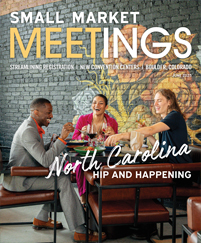
Courtesy Volunteers of America
When I had a chance to go to Sioux Falls, S.D., for a conference, I jumped at the opportunity. Although I have a nephew there, it had been two decades since I had been, and I looked forward not only to seeing him but also to exploring his home city.
I drove the nearly 600 miles from my home, as I love the serenity of driving the Midwest. Thousands of acres of corn and wheat blow by, and cows graze lazily on green pastures. The drive gives my mind a temporary respite from everyday life and reminds me of my Midwestern roots.
Sioux Falls is as easy to get to by car as by plane. But if driving isn’t on your itinerary, the farmland is as scenic from the sky; and the Sioux Falls Regional Airport is typical of the nice, but quieter, Midwestern hubs.
Sioux Falls is centrally located between Chicago and more traveled destinations west, such as Yellowstone, and many travelers make a stop there to see what it’s all about.
The city of roughly 150,000 residents is the largest in South Dakota and is in the middle of all of that lush, beautiful farmland.
On the one hand, Sioux Falls is exactly what you would expect: a small Midwestern city with a low crime rate. It’s a big “Mayberry,” where parents still let their children walk to school and people wave to you when you drive down the uncongested streets or smile and greet you while walking down the sidewalk or stop to help if you look lost.
On the other hand, Sioux Falls is what you would expect of a more sophisticated Midwestern metropolitan area such as Chicago, St. Louis or Kansas City. It boasts a number of the attractions found in those larger cities: a symphony, touring Broadway shows, minor sports teams, casinos and a revitalized downtown.
Tom Kilian, a local amateur historian who moved to the “big city” in 1941 with his parents, told me that Sioux Falls was founded in 1856 or 1857; recorded history isn’t clear. “They’re still arguing over that one,” Kilian said.
His great-grandfather came to the city from Norway, and although there are many people of Norwegian roots there — and you can hear a Nordic accent, less noticeable than that of their Northern neighbors in Fargo, but still detectable — Sioux Falls was founded by wealthy East Coast businessmen looking to turn a profit from flour milling on the falls of the Big Sioux River.
Those falls are still flowing, and the rushing water is now part of Falls Park, one of the city’s biggest tourist draws. Kilian said that when the falls were no longer needed for industry, sadly, they became an eyesore.












